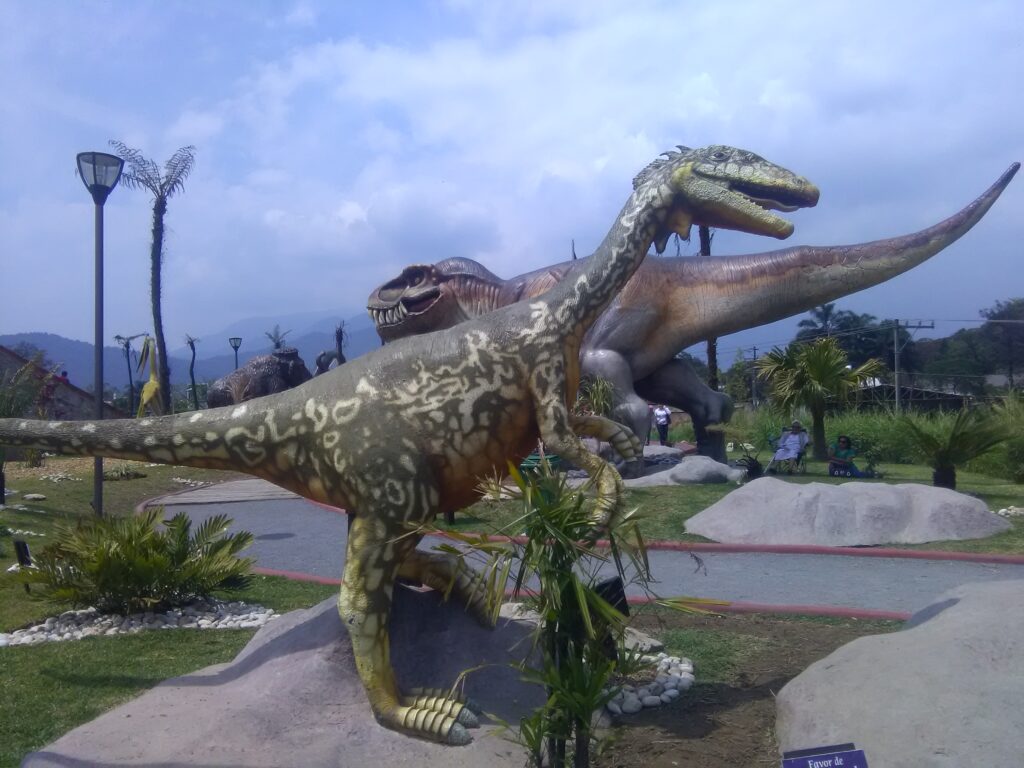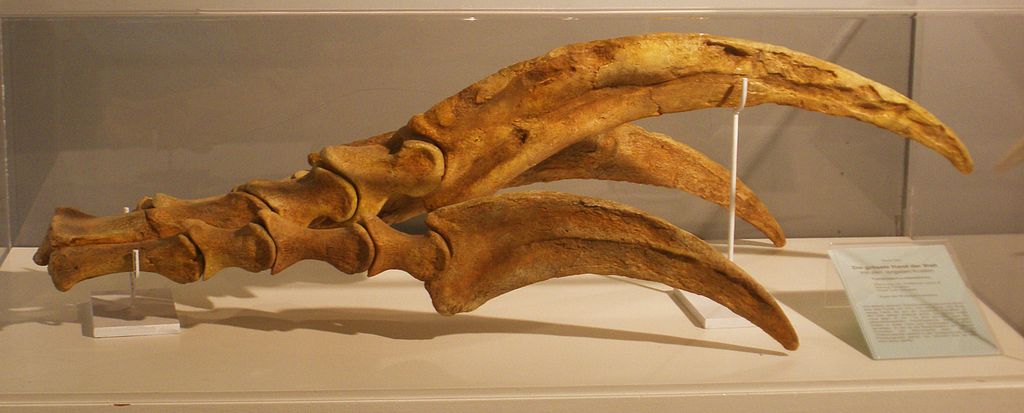Picture this: It’s 1824, and the scientific world is about to be turned upside down by a discovery that would challenge everything people thought they knew about the history of life on Earth. In a small English town, fragments of ancient bones were about to reveal creatures so massive and terrifying that they seemed to belong in the realm of mythology rather than science. This is the story of how one man’s curiosity and scientific rigor opened the door to our understanding of dinosaurs, forever changing how we view our planet’s prehistoric past.
The Man Behind the Discovery

William Buckland wasn’t your typical 19th-century gentleman scholar. Born in 1784, this Oxford professor possessed an insatiable appetite for geological exploration that bordered on obsession. His contemporaries often found him covered in mud, hammer in hand, chasing after rock formations with the enthusiasm of a child pursuing butterflies.
What set Buckland apart wasn’t just his passion for geology, but his willingness to embrace unconventional methods. He would taste rocks to identify them, keep live animals in his home for research, and once famously ate his way through the entire animal kingdom in the name of science. This eccentric approach to learning would prove instrumental in his groundbreaking paleontological work.
The Mysterious Bones of Stonesfield

The story begins in the limestone quarries of Stonesfield, a small village in Oxfordshire where workers had been uncovering strange, massive bones for decades. These weren’t ordinary fossils – they were enormous, belonging to creatures that defied classification. Local quarrymen had been finding these mysterious remains since the 1790s, but no one could explain what they were.
The bones were so large and unusual that many dismissed them as belonging to elephants or other known large mammals. Some even suggested they might be the remains of biblical giants. But Buckland saw something different in these ancient fragments – something that would revolutionize our understanding of prehistoric life.
A Jaw That Changed Everything

In 1819, Buckland acquired the most significant piece of the puzzle: a massive jaw fragment containing enormous teeth. This wasn’t just any jaw – it measured over two feet long and contained teeth that were unlike anything seen in the modern world. The teeth were serrated like steak knives, clearly designed for tearing flesh rather than grinding plants.
The implications were staggering. This creature wasn’t a gentle giant like an elephant or rhinoceros. It was a predator of unprecedented size and power. Buckland began to realize he was looking at evidence of a world that had existed long before humans, populated by creatures that challenged the very foundations of natural history.
The Birth of Scientific Paleontology

What made Buckland’s work revolutionary wasn’t just the discovery itself, but his approach to studying it. Unlike previous fossil hunters who often jumped to wild conclusions, Buckland applied rigorous scientific methodology to his investigation. He compared the bones to modern animals, studied their structure in detail, and consulted with other experts.
He enlisted the help of Georges Cuvier, the famous French anatomist, who confirmed that these remains belonged to a giant reptile unlike any living species. This collaboration marked a turning point in paleontology, establishing it as a legitimate scientific discipline rather than mere curiosity collecting.
Megalosaurus: The Great Lizard
In 1824, Buckland published his findings in a paper that would make scientific history. He named the creature Megalosaurus, meaning “great lizard,” and provided the first formal scientific description of what we now know was a dinosaur. This wasn’t just a casual observation – it was a detailed, methodical analysis that set the standard for all future paleontological work.
The name itself was carefully chosen. “Megalos” meant great or large, while “saurus” meant lizard or reptile. Buckland believed he was dealing with a massive reptile, similar to modern lizards but incomparably larger. While his interpretation wasn’t entirely accurate by today’s standards, it was a remarkable achievement given the limited fossil evidence available.
Reconstructing an Ancient Predator
Based on the jaw and teeth, Buckland painted a picture of Megalosaurus that was both scientifically grounded and terrifyingly vivid. He estimated the creature to be 40 feet long and described it as a carnivorous reptile that would have dominated its ancient environment. The serrated teeth, he noted, were perfectly designed for slicing through flesh and bone.
His reconstruction, while not entirely accurate, was remarkably insightful. He recognized that this wasn’t just a larger version of modern reptiles, but something fundamentally different. The proportions, the tooth structure, and the overall anatomy suggested a creature adapted for a lifestyle unlike anything in the contemporary world.
The Victorian Sensation

Buckland’s announcement created a sensation in Victorian England. The idea that giant reptilian monsters had once ruled the Earth captured the public imagination in ways that few scientific discoveries ever had. Newspapers ran sensational stories about these “dragons of the ancient world,” and the educated classes debated the implications with fervor.
The discovery challenged religious beliefs about the age of the Earth and the nature of creation. If these creatures had lived and died millions of years ago, what did that mean for traditional biblical chronology? Buckland, being a devout Christian himself, struggled with these implications while maintaining his commitment to scientific truth.
Beyond Megalosaurus: Opening Flood Gates
Buckland’s work didn’t stop with Megalosaurus. His scientific approach inspired others to look more carefully at fossil remains that had previously been dismissed or misidentified. Soon, other researchers were discovering and describing additional species of these ancient giants. The floodgates had been opened.
Within a few decades, creatures like Iguanodon and Hylaeosaurus joined Megalosaurus in the scientific literature. Each new discovery added pieces to the puzzle of prehistoric life, gradually revealing a world populated by creatures that seemed to come from the realm of fantasy. Buckland had inadvertently launched the age of dinosaur discovery.
The Scientific Method in Action
What made Buckland’s work truly groundbreaking was his commitment to the scientific method. He didn’t just announce his discovery and move on – he continued to study, refine, and revise his understanding as new evidence emerged. When other researchers questioned his interpretations, he engaged in scholarly debate rather than defensive posturing.
This approach set a precedent for future paleontological work. Scientific discoveries weren’t just about finding fossils – they were about careful analysis, peer review, and the gradual accumulation of knowledge. Buckland showed that even the most extraordinary claims could be supported by rigorous scientific evidence.
Mistakes and Misunderstandings
Despite his pioneering work, Buckland made some significant errors in his interpretation of Megalosaurus. He envisioned it as a massive, sprawling reptile similar to a gigantic monitor lizard, rather than the bipedal predator we now know it to have been. He also underestimated its size – his 40-foot estimate was actually too large for most Megalosaurus specimens.
These mistakes weren’t failures of scientific method, but rather inevitable consequences of working with limited evidence. Buckland was essentially trying to reconstruct an entire animal from a few bone fragments and teeth. That he got as much right as he did is a testament to his scientific acumen and careful reasoning.
The Broader Impact on Geology
Buckland’s dinosaur work was just one part of his broader contribution to geology. His studies of fossil animals helped establish the principle that Earth’s history could be read in its rock layers, with each stratum telling a story about past environments and the creatures that inhabited them. This work laid the foundation for what would become modern stratigraphy.
He also contributed to the understanding of extinction, showing that entire groups of animals had vanished from Earth long before humans appeared. This was a radical idea at the time, as many believed that God’s creation was perfect and unchanging. Buckland’s fossils proved that the natural world had a complex history of change and development.
Influence on Darwin and Evolution

While Buckland himself never embraced evolutionary theory, his work provided crucial evidence that would later support Darwin’s ideas. The existence of extinct creatures like Megalosaurus demonstrated that life on Earth had changed dramatically over time. The fossil record revealed a progression from simple to complex forms that would become central to evolutionary thinking.
Darwin was well aware of Buckland’s work and cited it in his own writings. The dinosaurs that Buckland helped discover became key pieces of evidence for the theory of evolution, showing how life had experimented with different forms and adaptations throughout Earth’s history.
Legacy in Modern Paleontology
Today, William Buckland is remembered as the father of dinosaur paleontology. His careful, methodical approach to fossil study established protocols that are still followed by researchers around the world. Every dinosaur discovery since 1824 owes something to the standards he set with his description of Megalosaurus.
Modern paleontologists continue to refine our understanding of Megalosaurus using techniques Buckland could never have imagined. CT scans, computer modeling, and advanced comparative anatomy have revealed new details about this ancient predator. Yet the fundamental principles of careful observation and scientific reasoning that Buckland established remain unchanged.
The Ongoing Mystery

Despite nearly two centuries of study, Megalosaurus still holds many secrets. New discoveries continue to shed light on its anatomy, behavior, and place in the dinosaur family tree. Recent research has revealed that it was likely a more agile, bird-like predator than Buckland ever imagined, with complex social behaviors and possibly even feathers.
The creature that Buckland first described from a handful of bone fragments has become one of the most studied dinosaurs in paleontology. Each new piece of evidence adds to our understanding not just of Megalosaurus itself, but of the entire world of dinosaurs that Buckland first revealed to science. His pioneering work opened a window into deep time that continues to amaze and inspire us today.
William Buckland’s description of Megalosaurus in 1824 marked the beginning of our scientific understanding of dinosaurs, transforming scattered bone fragments into evidence of an ancient world populated by giants. His rigorous methodology and willingness to challenge conventional thinking established paleontology as a legitimate science and opened our eyes to the incredible diversity of life that once inhabited our planet. From those first mysterious bones in an English quarry to the sophisticated dinosaur research of today, we can trace a direct line back to one man’s curiosity and scientific courage.




